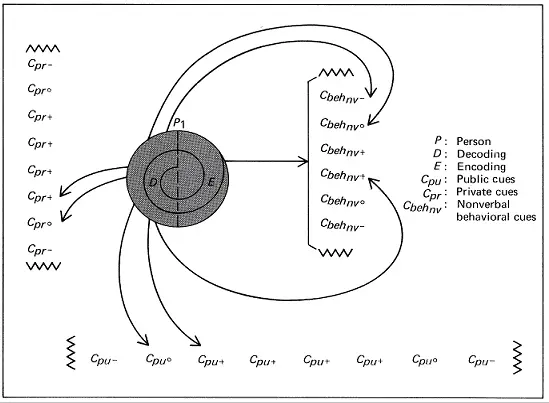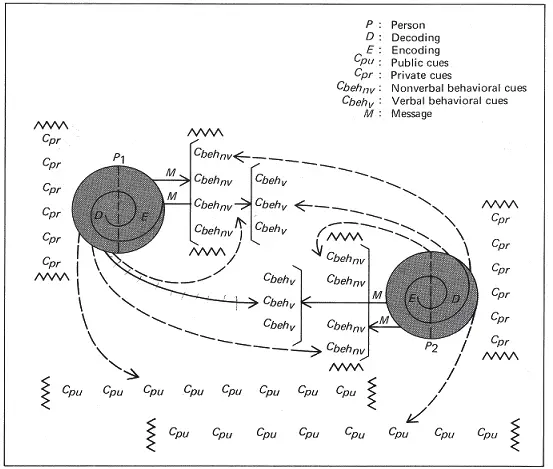Dean Barnlund proposed a transactional model of communication in 1970 for basic interpersonal communication which articulates that sending and receiving of messages happens simultaneously between people which is popularly known as Barlund’s Transactional Model of Communication.
The model has been further adapted and reformed by other theorists as General Transactional Model. The model shifted from the trend of linear model to dynamic and two way communication model.
Concepts of Barnlund’s Transactional Model of Communication

Barnlund’s Transactional Model is a multi-layered feedback system. This is a continuous process where sender and receiver interchanges their places and both are equally important. The message passing takes place with a constant feedback being provided from both parties. A feedback for one is the message for the other.
Components of Barlund’s model
Cues refers to the signs for doing something. As per Barnlund there are: public cues, private cues and behavioral cues. In the model diagram shown above, spiral lines gives graphic representation to the assumptions like public cues and private cues.

- Public cues (Cpu) are physical, environmental or artificial and natural or man-made.
- Private cues (Cpr) are also known as private objects of orientation which include senses of a person. Both these cues can be verbal as well as non-verbal. Another set of cues are behavioral cues.
- Behavioral cues can be verbal (Cbehv) as well as non-verbal (Cbehnv).
The arrows and their directions show that the message is intentionally sent and actively taken where the receiver plays a key role of giving feedback. Arrows also show the process of production of technical encoding, interpretation and decoding.
The jagged lines show that the availability of cues can be unlimited and are denoted as VVVV.
The valence signs, +,0 and – are also attached to these types of cues which illustrates the amount/degree/strength of attractiveness of the cues in the message.
Speech act refers to particular instance of communication in the model.
Filters are the realities of people engaged in communication. Here the senders’ and receivers’ personal filters might differ according to cultures, traditions, content of the message, etc.
Noise is the problem that arises in communication flow and disturbs the message flow.
Advantages of Barnlund’s Transactional Model of Communication
- The model shows shared field experience of the sender and receiver.
- Transactional model talks about simultaneous message sending, noise and feedback.
- Barnlund’s model is taken by critics as the most systematic model of communication.
Disadvantages of Barnlund’s Transactional Model of Communication
- Barnlund’s model is very complex.
- Both the sender and receiver must understand the codes sent by the other. So they must each possess a similar “code book”. (The concept of code book is not mentioned in the model but understood.)
